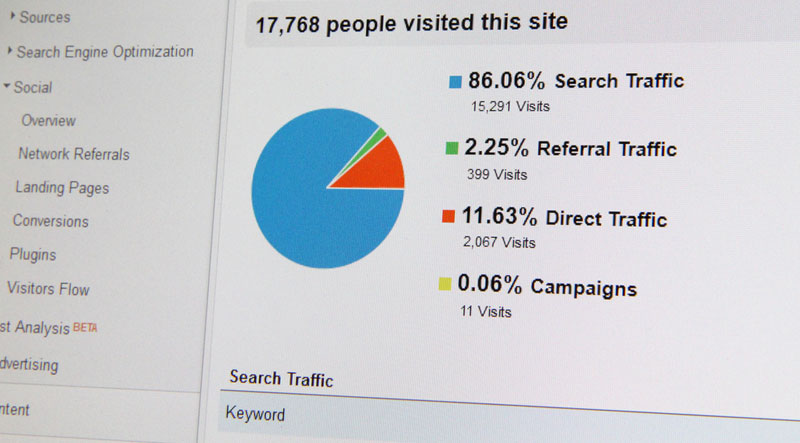As a marketing or business professional, you know how important visuals are in marketing, especially in this social media age. But how can you improve your visuals?
How can you increase your engagement with those visuals?
How can you use visuals to the biggest advantage without spending a lot of your budget?
Try these tips:
Tip 1: Know when to allocate funds and when to DIY.
Certain design projects should be done by graphic designers, artists, photographers, web developers, and other artistic professionals, while other design projects can be done by anyone with a decent eye and a willingness to learn basic design skills. Knowing the difference can help you spend your marketing budget wisely.
Depending on your business, products or services, and industry, your types of visuals will vary just as much as the platforms they will be shared on. For example, a photographer would never dare to use stock photos because they have their own visuals stockpiled from their business, but an IT business would probably utilize stock photos because paying for a photographer for most visual needs would not be in the budget.
Regardless of your industry and business, it’s best to allocate funds to the professionals for the following visuals:
- Logo design
- Visual branding
- Website design and redesign
- Video introductions
- Brand graphics
Once you have these items created, whether for the first time or during a rebrand, you can utilize these elements to create your own visuals, whether it’s an infographic, social media post, or flyer.
Tip 2: Follow trends.
In another blog article, we discussed how to follow trends appropriately and jump on them when it suits your target audience. When it comes to visuals, jumping on a trend can be somewhat quick and easy to do. Depending on your industry, you can create an image, take a photo, design an infographic, generate a meme, or make a short video that replicates or discusses the trend and its influence on your business.
For example, what are the psychological reasons people view the dress as blue and black or white and gold? Or have your employees performed the ice bucket challenge on company leaders? These are older examples (though they have had some comeback), but creating one visual for multiple platforms doesn’t have to take too much time, money, or effort if your team is up for it.
Tip 3: Repurpose content.
To up the ante on your visuals doesn’t always mean reinventing the wheel. Instead, it can mean being visual to begin with. Does your business host events? Record all, if possible, or bits and pieces of the events to share on multiple platforms. Take photos of events and typical days at work to show the inside scoop and humanity of your company. Turn long-form content into visuals, such as infographics and videos. Then, share those visuals across all platforms, including on your website. Website visitors typically enjoy the opportunity to watch a 3-minute explainer video instead of reading an article.
Actionable insight: When creating any visual, resize and personalize it for multiple platforms. Create a blog header and multiple social media images at once. Then add more content to develop infographics and video clips using that information. By creating multiple visual assets at the same time, you already know the look and feel of those pieces for all the platforms you intend to share them on. There’s no need to share them all right away, either. Instead, stockpile them and distribute them over time for maximum impact. Only a short time commitment upfront and you have multiple visuals to share later on.
Tip 4: Share your competitors’ visuals.
Many small businesses compete against big businesses that have larger marketing budgets and staff. But that doesn’t mean only big businesses get the attention online. In fact, you can share your competitors’ content, as long as you attribute the source. This is easy to do on social media because most shares and retweets maintain the original source. This not only brings quality content from your competitors to your followers, but it also helps your overall SEO. Plus, your competitors’ followers might take an interest in your small business through the process. But don’t just share the competitors’ fantastic infographics, videos, and images. Instead, add commentary to your share to encourage the conversation.
Sharing your competitors’ visuals is often a timely act, too, and can be done with little time investment. A frequent search and review on your main competitors’ sites (that you know create quality content and visuals) and social media pages can offer ample sharing opportunities.
Tip 5: Use templates and find inspiration.
Armed with professional visual branding from tip 1, you can find the right templates to create your own visuals, whether that’s infographics, social media posts, or flyers. There are many free and inexpensive graphic design tools out there, such as Canva, that your team probably already uses. Determine the templates that suit your visual branding, personalize them accordingly, and then reuse them often. The key is to have enough templates so your brand image is cohesive, yet visuals are different. This is why personalizing the templates to your brand is so important.
When a template becomes stale, choose another or create your own. Using templates saves you time and spurs creativity without limiting you, but they aren’t the only option. You can also find inspiration by viewing visuals created by artists in and out of your industry. Letting a final product example spark your creativity before designing any visual takes more time, but is often free when using Google, Pinterest, and graphic design sharing sites, such as Dribbble.
Tip 6: Collect and share user-generated content.
Depending on your business, you may have online fans that rave about your products or services online, either in testimonials, reviews, or social media posts. After getting permission from the customers, collect that content and then create a slideshow or video using the text and images provided. Customers usually enjoy when companies share their words and images, and will often share them with their friends. Be sure to attribute the customers by name or handle in the video and description, and then share it on multiple platforms, including your website.
Some companies simply share customer posts, but creating a video of posts and reviews not only ups the ante, but also combines content from multiple platforms into one piece of shareable content for distribution on multiple platforms.
Tip 7: Share personal photos and videos.
People love photos of other people. Plus, photos of your team can help your customers and followers learn more about you by placing faces to names. Sharing personal photos of yourself and your team doesn’t have to mean paying a photographer for professional headshots (although that has its place, too). Instead, take photos of yourself and staff around the office or place of work. Depending on your business, you could share interesting events, projects, non-profit support opportunities, parades, and whatever else your team is involved in. Encourage your staff to occasionally take photos at work or to walk through the office while recording a video to share what your company culture is like.
Depending on the size and type of your business, you can get really personal with your captions. Share fun personal insights into your professional and personal life, as appropriate, to really reach your customers on a personal level. Share your story about why you joined or started the company, and encourage your team to do the same. This can be done in captions with photos or in short video clips.
Tip 8: Use screenshots and GIFs.
Screenshots can help many SaaS and other service-based businesses showcase the user interface in a simple format, no demo required. They offer a quick look into the products and services in a variety of ways, but are especially beneficial for how-to videos and blog posts.
Is a screenshot not enough but a video is too much? Try creating a GIF to show your visitors and followers how something works (or to share something just for fun).
Tip 9: Optimize images for SEO and accessibility.
While most marketers know this, it can be tempting to become lazy, especially when there are other projects looming on the horizon (which there always are and always will be). To optimize website images for SEO, you need to add an accurate file name (not IMG_5824) and alternate text.
These pieces not only help with SEO, but they also help make your images accessible and readable to those using virtual assistants and screen readers. For this purpose, you will also want to add a description and caption to every image you upload to your website.
When you share images from your website (say, with your latest blog post), the appropriate description should be shared with the link and image. This will help your visuals be consistent across platforms while aiding accessibility.
Conclusion
Improving your visuals doesn’t have to take a lot of time, money, and resources. Instead, it takes a bit of ingenuity and consistency. Which tip will you use first? Let us know on Twitter @sharedteams.
If you want to delegate logo design, visual branding, or other graphic design work, our team can help.







